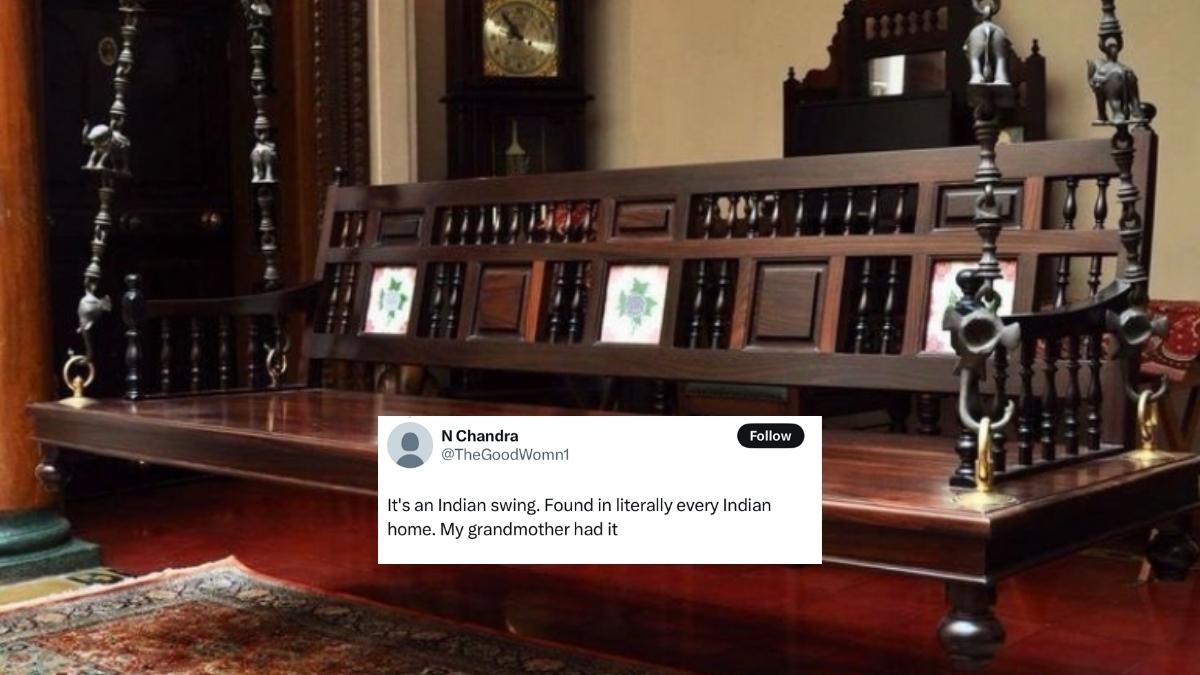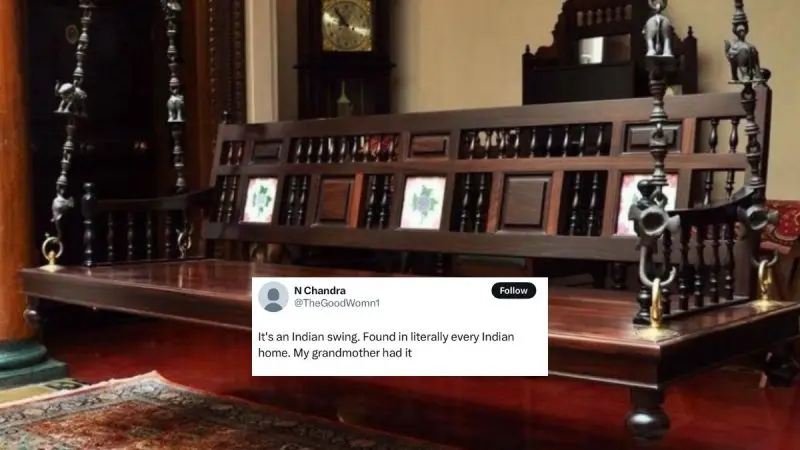We’ve watched the West remix our culture so many times that it’s almost a genre of its own. First, they turned haldi doodh into “turmeric latte.” hen came the dupatta, rebranded as a “lightweight Nordic scarf”, draped like it just descended from a hygge catalogue. And now? They’ve set their sights on our jhoola — a carved wooden swing that lives in Indian verandahs and family memories — and called it a Gothic living room swing!
Indian Jhoola, Not “Gothic Swing”
“scandanavian scarf”, “turmeric latte”,“golden milk”, “christian yoga”, “beaded Y2K maxi skirts”, and now they’re out here calling JHOOLA a “hand carved antique solid wood gothic living room swing”? white people pmo so bad https://t.co/CHhuaMXxFK
— ✧ anj ✧ (@anjulaaaa) July 7, 2025
So here’s what happened: an American artist named Anne Chovy posted a photo on X of a hand-carved wooden swing. She called it a “Gothic antique.” She thought she was sharing a piece of European-style furniture. But Indians across the world squinted at the photo and went: “Wait… that’s just… my dadi’s living room.”
What followed was a cultural whiplash. People flooded her comments with receipts: “That’s an Indian jhoola,” “Those carvings are straight out of Rajasthani design,” “This is cultural theft, not aesthetic appreciation.” Another user perfectly pinpointed the issue saying, “The West has a habit of rebranding Indian heritage, ideas, and traditions as their own from yoga to turmeric.”
The Indian Jhoola: More Than Wood And Rope
Let’s be clear! A jhoola isn’t just furniture. It’s a memory and a ritual. It’s the creak of nostalgia you hear in your nani’s old house. It’s the soft sway during monsoon evenings when your parents used to tell you stories. In South India, it’s the oonjal, used in wedding ceremonies where newlyweds are gently rocked together as elders bless them.
In the North, it’s suspended from ceilings and takes centre stage in courtyards during festivals. During Jhulan Purnima, idols of Radha and Krishna are placed on swings and worshipped. Even Bollywood has been obsessed with jhoolas. Take classic films like Hum Dil De Chuke Sanam and Chupke Chupke as examples! It’s always there, swaying gently in the background, cradling emotions and stories. It isn’t just design, rather it’s soul work.
Also Read: “Itni Garmi Hai Yahan,” Indian Man Warns Against Travelling To Europe This Summer; Netizens Agree
Why It Hits Different
this is a south indian oonjal! they’re not always this fancy but they are always nice to swing on pic.twitter.com/OKXMKk1K4W
— perfect little soup girl (@tokkigos) July 6, 2025
Calling it “Gothic” is like renaming chai as “spiced botanical treasure.” It ignores the artisans from Rajasthan or Gujarat who’ve spent decades hand-carving these heirlooms from neem or teak. It flattens the meaning behind it and the rituals, the songs, and the generations that grew up being rocked to sleep on it. More than gatekeeping, it is about giving acknowledgement where it’s due.
Also Read: 10 Things To Do In Rajasthan’s Border City, Sri Ganganagar According To A Local
Swinging Back
That viral post wasn’t a one-off, it was the latest example of a bigger issue. The jhoola isn’t Gothic and according to netizens too, it doesn’t need rebranding. It’s childhood, craft, community and calm, all rolled into one swing. And it deserves to be called by its name. Let it swing the way it always has: unapologetically Indian.
Cover Image Courtesy: Pinterest
For more such snackable content, interesting discoveries and the latest updates on food, travel and experiences in your city, download the Curly Tales App. Download HERE. First Published: July 08, 2025 12:46 PM




